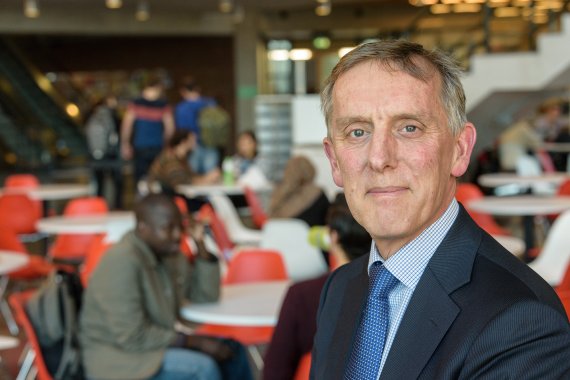WUR will be collaborating closely with Eindhoven University of Technology, Utrecht University and Utrecht University Medical Centre. The respective boards intend to sign a cooperation agreement around the new year. Rector Arthur Mol explains the plans.
What prompted the new collaboration with Utrecht and Eindhoven?
‘We know we can’t meet the global challenges alone, that we need to collaborate with other institutions and disciplines. That is why the WUR Executive Board has been conducting exploratory talks with Utrecht University for some years. There is a lot of common ground between Wageningen and Utrecht. Animal Sciences in Wageningen collaborates with the Veterinary Medicine faculty in Utrecht, plant researchers work together on phenotypes, and we work together on environmental issues in the SENSE research school. We drew up a report on those collaborative activities but at first it did not lead to any initiative to extend the cooperation.’
What changed?
‘By then, we were having the same talks with Eindhoven University of Technology and that went quickly. Wageningen and Eindhoven complement one another perfectly. They are interested in agrofood and sustainability, and want to work on that with us. We want to invest in data science and artificial intelligence, and we know that Eindhoven has a lot of fundamental knowledge in that area. We soon had a cooperation plan. Then it turned out that Utrecht and Eindhoven already worked together a lot and that they had formalized this collaboration. For example, they collaborate on high tech and healthcare. That is also why Utrecht University Medical Centre is involved in the partnership. The medical centre is interesting for WUR anyway as our nutrition groups would like to work with them. So the four institutions got together last year and identified three areas where we want to experiment with intensive cooperation: molecular life sciences, artificial intelligence and education.’
What will collaboration look like in the life sciences?
‘In the molecular life sciences, I have high hopes of the collaboration between Utrecht and Wageningen, with Utrecht doing the human and medical life sciences and Wageningen the plant and animal life sciences. Four young scientists from Utrecht, Eindhoven and Wageningen, with Diana Machado de Sousa from WUR, are now getting together to come up with innovative research themes where we can collaborate. We want to know what new things you can do if you work together.’
We know we can’t meet the global challenges alone
What about artificial intelligence?
‘Eindhoven is the strongest partner when it comes to artificial intelligence. Earlier this year, they announced that they would be clustering their AI research in the Eindhoven Artificial Intelligence Systems Institute (EAISI), for which they have earmarked 100 million euros. Eindhoven will be recruiting about 50 new scientists in this area and acquiring appropriate research facilities. Eindhoven has a lot of fundamental knowledge about AI whereas we have expertise in its application in agrofood and the environment, and Utrecht focuses on health and chemistry. We are also investing considerably in AI research and education.’
Will there be joint degree programmes?
‘As regards education, the four partners want to join forces in the field of data sciences. We also want to improve access to each other’s courses for students. It should become easier for Wageningen students to do a module or a minor in Utrecht or Eindhoven, and vice versa. I can also see us having duo jobs, with staff working three days in Wageningen and two in Utrecht for instance. Or an Eindhoven professor who spends one day a week in Wageningen.’
What next?
‘We asked the institutions’ Young Academies to think about collaboration in four broad interdisciplinary areas: food, energy, health and sustainability. The respective boards intend to sign a cooperation agreement around the new year. We are also pumping money into the partnership — each partner will invest 1.5 million euros per annum in the collaboration over the next four years. That means we will jointly be investing 24 million euros. In March 2020, we want to organize a meeting in which our scientists further explore the collaboration options in terms of the content.’

 Rector magnificus Arthur Mol: ‘Perhaps there will be duo jobs: three days in Wageningen and two in Utrecht for instance.’
Rector magnificus Arthur Mol: ‘Perhaps there will be duo jobs: three days in Wageningen and two in Utrecht for instance.’